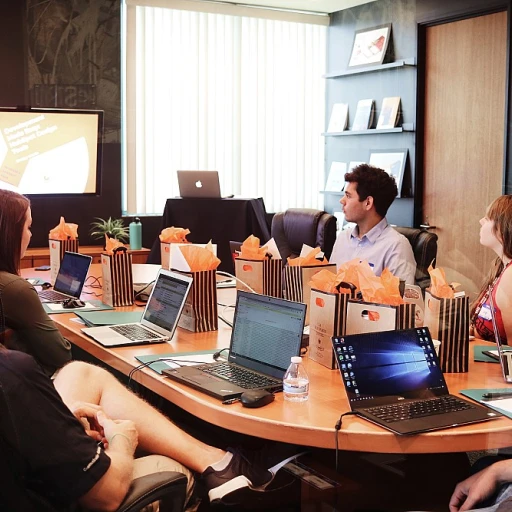Understanding the Importance of Icebreakers
The Significance of Icebreaker Activities
Icebreaker activities serve as a powerful tool in building connections among team members, especially in diverse workplaces where individuals may not frequently interact with colleagues outside their immediate work circles. By fostering these connections, icebreakers encourage collaboration and create an inclusive atmosphere that can improve overall work morale. When introducing new team members or convening for a meeting, icebreakers can help ease initial awkwardness, encouraging employees to engage with one another more naturally. People tend to be more comfortable and open in a relaxed setting, and starting conversations with fun icebreaker questions can effectively set this tone. The simple act of asking “What's your favorite holiday destination?” or “Which movie would you choose to watch for the rest of your life?” can reveal common interests and spark side conversations. In today's workplace, where virtual interactions and remote work have become more common, the use of icebreakers in virtual team meetings is equally important. Not only do they help to break the ice among remote team members, they also ensure everyone feels included despite the physical distances. Engaging your virtual team with icebreaker questions promotes involvement and can set the stage for a productive meeting. For insights on how to creatively break the ice in a meeting, explore our creative ways to break the ice guide. Icebreaker questions are not just about fun; they're strategically crafted to enhance communication and understanding within your team. From team building to navigating the dynamics of virtual meetings, the effectiveness of well-planned icebreaker activities is underscored throughout their application in various work scenarios. As we explore in subsequent sections, measuring the impact of these icebreakers on employee engagement is crucial in optimizing their usage and overcoming any challenges that may arise.Crafting Effective Icebreaker Questions
Designing Interactive Icebreakers to Break the Ice
Creating effective icebreaker questions is an art that can significantly enhance team building and employee engagement. To craft questions that are productive and enjoyable, consider the following principles:- Relevance and Context: Tailor the questions to suit the specific situation and team dynamics. Whether it’s a formal meeting or a casual virtual gathering, icebreakers should align with the context.
- Inclusivity: Choose questions that allow all team members to participate comfortably. Avoid topics that might be sensitive or controversial, ensuring a safe environment for everyone.
- Simplicity and Clarity: Great icebreaker questions are straightforward and easy for participants to understand and respond to. Avoid overcomplicated queries that might confuse or intimidate team members.
- Relaxed and Fun Tone: Aim for a light-hearted atmosphere. Fun icebreaker questions about a favorite movie or a memorable holiday icebreaker can often lead to engaging conversations and help break the ice more naturally.
- Encourage Sharing: Promote open communication by encouraging team members to share personal experiences or stories, making sure they feel comfortable doing so in the work environment. For example, asking about a piece of advice that changed their life can open up interesting dialogues.
- Timing and Format: Consider the time available and the format, especially in virtual meetings. Quick responses are ideal for short meetings, while more detailed questions can be reserved for longer sessions.
Examples of Icebreaker Questions for Different Scenarios
Versatile Icebreaker Questions for the Workplace
When it comes to crafting effective breaker questions for employees, having a variety of options to choose from can enhance interaction and foster deeper connections. From fun inquiries to more meaningful topics, here are some good icebreaker questions tailored to different scenarios, helping to build relationships and facilitate engaging conversations.- General Team Building: "If you could have any superpower, what would it be and why?" This question invites team members to open up and share a creative vision of their best selves, making it a fun icebreaker for new teams.
- Holiday-Themed: "What's your favorite holiday tradition, and why is it special to you?" This holiday icebreaker helps connect people on a more personal level, encouraging them to share cherished memories.
- Professional Insight: "What's the best piece of advice you have ever received about work?" Such questions work well when setting a professional tone and providing insights into an individual’s work life.
- Virtual Team Meetings: "What one job would you choose for the rest of your life if given a chance?" Virtual teams can benefit from this question as it sparks discussion about passions and long-term goals.
- Casual Context: "What's your all-time favorite movie and how many times have you watched it?" An easy and playful way to break the ice, this question reveals fun aspects of personality.
The Role of Icebreakers in Remote Work
Bringing Icebreakers into the Virtual Workspace
With the shift to remote work, the dynamics of team building and interaction have evolved significantly. Icebreaker questions, which traditionally helped break the ice in face-to-face settings, now play a critical role in virtual meetings as well. Although remote work challenges team members' connections, icebreakers can be pivotal in bridging this gap.
At the start of a virtual meeting, good icebreaker questions can set a positive tone and encourage open communication. For instance, asking team members to share their favorite movie or a piece of advice received can spark engaging dialogue and make the meeting feel more inclusive. This ensures everyone, regardless of location, feels part of the team.
The time chosen for these activities is also crucial. Whether it’s a company holiday meeting or a regular team catch-up, incorporating fun icebreakers at the beginning can enhance spirits and foster a sense of camaraderie. Questions like "If you could choose one job for the rest of your life, what would it be?" or "What's the best holiday you've ever had?" can lead to enjoyable interactions and deeper understanding among team members.
Furthermore, virtual icebreakers help highlight the human aspect of remote work. They remind individuals that behind every screen is a person with experiences, thoughts, and favorite things. This can greatly improve the virtual team’s morale and engagement, supporting a thriving remote workplace.
Measuring the Impact of Icebreakers on Employee Engagement
Evaluating the Efficacy of Icebreakers in Enhancing Engagement
To effectively measure the impact of icebreakers on employee engagement, it's essential to consider several key elements. Icebreakers can significantly influence the overall work atmosphere and increase team dynamics, particularly during virtual meetings and team building activities. Here’s how you can assess their effectiveness:- Employee Feedback: Engage team members by asking them about their favorite icebreaker questions and how these activities have affected their experience at work. This will help you gauge the immediate perceptions and nuanced shifts in team engagement.
- Observation of Team Dynamics: Keep an eye on how employees interact before and after icebreakers. Have these activities fostered a more cohesive team? Are people more willing to share their ideas and experiences?
- Improvement in Participation Levels: Examine if there’s a noticeable increase in participation during team meetings and whether employees feel more comfortable speaking up and sharing insights following icebreakers.
- Enhanced Communication: Review whether icebreaker questions have helped in breaking the ice and led to richer, more meaningful conversations. An icebreaker like sharing a movie recommendation or a piece of advice can often lead to discovering new personal interests among team members, fostering deeper connections.
- Virtual Team Engagement Metrics: In virtual teams, track how icebreakers contribute to the seamless interaction of the team. Are these icebreaker questions making virtual life less daunting for team members? A fun icebreaker could be instrumental in reducing virtual meeting anxieties.
Overcoming Challenges with Icebreakers
Navigating Objections and Challenges
Implementing icebreakers in the workplace isn't without its challenges. Some team members might feel apprehensive about sharing personal information or participating in activities that seem unrelated to work. As an organizer, it's essential to anticipate these objections and address them tactfully.
First and foremost, consider the time being allocated to these icebreakers. Some individuals might worry about taking time away from their job-related tasks. To mitigate this concern, ensure that icebreakers are concise, aiming for a 5-min read or less, just like a swift introduction during a virtual meeting. This efficiency makes the activity more acceptable.
When choosing the icebreaker questions, tailor the activities to suit your team and company culture. For example, a holiday icebreaker focusing on preferred holiday destinations can help people relate on a fun level. However, it's vital to make these activities optional, allowing team members to opt-out without pressure or judgment.
Moreover, varying the format can also alleviate hesitation. Some may prefer discussing things like their favorite movie of all time, while others might enjoy sharing a piece of advice that they received early in their career. Thereby, offering a mix ensures everyone from team members to leadership has the opportunity to engage comfortably.
In virtual settings, effective icebreakers are those that seamlessly integrate into the life of avirtual team. For instance, a good icebreaker in remote work might involve team members sharing a favorite app that helps them stay productive during a workday.
Lastly, measuring the impact of these icebreakers on engagement is crucial. Observe whether team building becomes evident in ongoing work dynamics, which can be an indicator of successful icebreaker integration. But remember, flexibility in approach and sensitivity to individual preferences are key when introducing activities that aim to break the ice.











